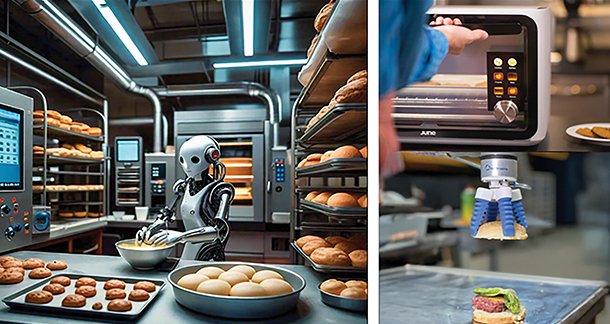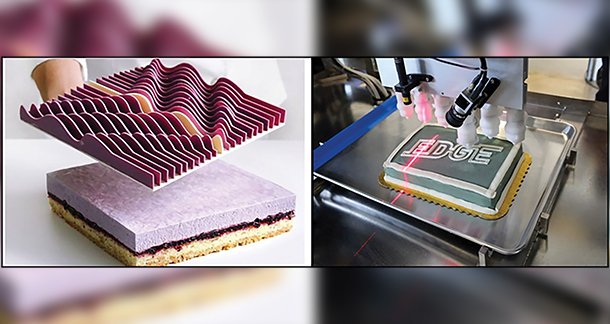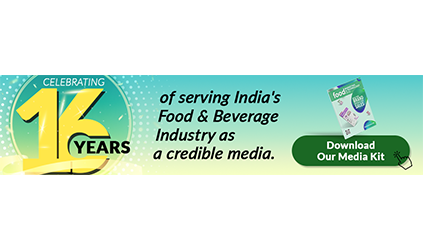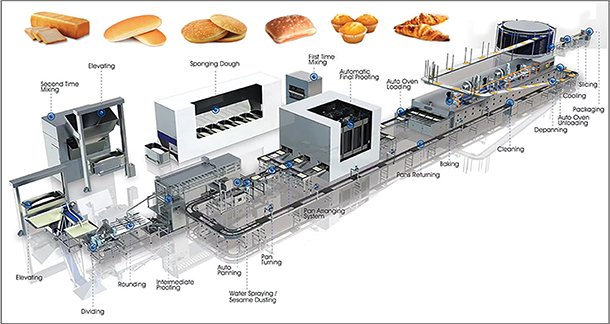Introduction: When Tradition Meets Technology
Once rooted solely in handmade charm and centuries-old recipes, bakeries today are experiencing a renaissance. This article takes you behind the scenes of the modern-day baking revolution where automation, smart ovens, 3D printing, and artificial intelligence blend seamlessly with the art of baking. From streamlining production to crafting personalized pastries, technology is not just upgrading bakeries , it’s completely redefining them. This piece explores how digital tools, sustainable practices, and future-forward trends are turning your neighborhood bakery into a high-tech haven for taste. From the comforting aroma of freshly baked bread to the intricate craftsmanship of artisan pastries, bakeries have long been a symbol of tradition, taste, and timelessness. Yet, behind the glass displays and golden crusts, a silent revolution is taking place that is driven by innovation and technology. Today, bakeries are no longer just places of manual kneading and wood-fired ovens, they are becoming laboratories of food science and hubs of digital transformation. As consumer demands evolve and the food industry becomes more competitive, technology is shaping the future of baking like never before.
- The Magic of Automation

- Smarter Baking with AI and IoT
With the help of AI (Artificial Intelligence) and IoT (Internet of Things), bakery equipment can “learn” how to perfect a bake. Sensors track humidity, dough consistency, and even ingredient freshness and adjusting settings in real time to get that perfect crust or soft center. AI is also helping bakers understand what their customers love. Want more vegan cookies on Mondays? Or sugar-free cakes during festivals? Algorithms help predict buying trends so bakeries can stay one step ahead of customer cravings.
Fig. Soft Touch, Strong Tech: Robotics in Food Assembly
- 3D Printing: Designing Dessert Like Never Before
3D food printers are bringing a whole new level of design and creativity to the baking world. From printing intricate chocolate toppers to crafting personalized fondant decorations, bakers can create edible art with mind-blowing precision. It’s not just about looks where scientists are using 3D printing to develop breads with added protein, fiber, or even ingredients for people with allergies. The future of functional food starts here.
Fig. Sculpting cake: 3D Printing Brings Precision and Art to Dessert Design
- Sustainable Baking is the New Normal
Customers care about the planet and so do modern bakeries. New-age ovens are energy-efficient, packaging is compostable, and some bakeries are even using banana peels or leftover grains in recipes to reduce waste. Ingredient-tracking software ensures that every grain of flour and drop of milk comes from ethical, sustainable sources. Plus, edible packaging? It’s happening. Imagine a cupcake wrapper that melts in your mouth instead of ending up in the trash.

- Health is Hot: Tech for Wellness Baking
From keto cookies to gluten-free bread that doesn’t taste like cardboard, technology is making health-conscious baking easier and tastier. Advanced enzyme systems, modified fibers, and plant-based proteins are being used to enhance texture, shelf life, and nutrition. Precision ingredient dispensers ensure the right mix every time, especially in fortified or functional foods meant for kids, diabetics, or athletes.
- The Rise of the Digital Bakery
That’s how fast you can now get your favorite baked treats, thanks to bakery apps, cloud kitchens, and online ordering platforms. Virtual bakeries (that exist only online) are booming in cities, delivering fresh, customized items straight to your door. Some bakeries even let you design your cake in augmented reality before ordering it.
- Bakers are Getting Tech-Savvy Too
Baking schools are upgrading too. Courses now teach food science, automation, and even how to operate 3D printers and robotic mixers. Virtual reality is being used to train bakers in kitchen safety and recipe precision before they ever crack a real egg. Tomorrow’s bakers are part-chef, part-engineer, part-artist and 100 % ready for the future.
Conclusion
Baking a Better Tomorrow: Technology isn’t replacing bakers, it’s empowering them. From small-town patisseries to large-scale bakeries, technology is helping create safer, tastier, and more sustainable products. As tradition and innovation rise side by side like a perfectly proofed dough, the future of baking looks brighter and more delicious than ever.
So, the next time you bite into your favorite brownie, remember: it’s baked with love and a little bit of science.
References
- Food and Agriculture Organization (FAO). (2021). The Future of Food and Agriculture – Trends and Challenges.
- Bakerpedia. (2024). Automation in Baking. Retrieved from https://bakerpedia.com
- Zhang, Y., et al. (2022). “Smart baking: Integrating sensors and AI in bakery production.” Journal of Food Engineering, 318, 110948.
- Taylor, J. (2023). Technological Advances in Artisan Baking. Routledge.
- Arora, S. (2023). “Sustainable practices in modern bakeries.” FoodTech Insights, 12(3), 45–52.
About the Authors
Akansha Sharma1 and Ruchi Verma2*
1PG student
2Assistant Professor
1,2Department of Food Processing and Technology,
School of Vocational Studies and Applied Sciences,
Gautam Buddha University, Greater Noida (U.P)
*Corresponding author email: ruchiverma0715@gmail.com



